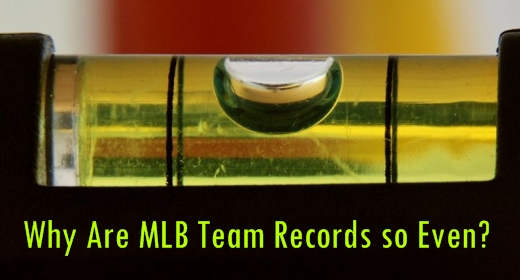Some Starting Figures
In 2010, the best record in Major League Baseball belonged to the Phillies. They won their division by a sizeable margin and put up a winning percentage of .599. On the opposite end of the spectrum sat the Pittsburgh Pirates with a winning percentage of .352 – good enough to finish 35 games out of first place in the NL Central. How does this compare to other sports?
Comparing the NBA
In the 2010/2011 NBA regular season, the Portland Trailblazers posted a .585 winning percentage – the closest winning percentage to the Phillies who had the best record in The Bigs. What did a .585 winning percentage get the Blazers? It landed them a 6 seed in the playoffs and little else. The Detroit Pistons posted a .366 winning percentage, comparable to the Pirates who finished with the worst record in the Majors. You might call the Pistons a bad basketball team, but you wouldn’t dare call them the worst. They finished with a better record than 6 other teams.
Comparing to the NFL
Winning percentage means even more in the NFL. In the 2010 NFL regular season, 6 teams posted a winning percentage of .625 (the closest winning percentage to the Phillies). Of those 6 teams, 4 made the playoffs and 2 didn’t, showing that even a respectable record doesn’t get you nearly as far. As for futility, 6 NFL teams posted a winning percentage lower than .352 which marked the worst record in the MLB.
The Difference Between Best and Worst
- MLB – .247 difference in winning percentage (Best – Worst)
- NBA – .549 difference in winning percentage (Best – Worst)
- NFL – .750 difference in winning percentage (Best – Worst)
A Long Season
162 Games – that’s how long a Major League Baseball season lasts. The length of the season is usually enough to balance out any streaks (positive or negative). A 5 game winning or losing streak is fairly common in baseball and usually isn’t cause for too much media attention. Winning (or losing) 5 games in a row in the NFL and you’ve got yourself a story. The effects of a winning or losing streak are mitigated by the length of the season, meaning even a bad team has a chance to get hot and steal a few wins. In other sports, bad teams are bad all season long and would be hard pressed to see a winning streak of 2 or more games.
The Differences in Playing Series
With the exception of division rivals, most teams in other sports only play an opponent 1 or 2 times a year – non-divisional baseball opponents can meet as often as 6 times in a season (Two, Three games sets). When the Patriots (best record in the NFL) play the Panthers (worst record in the NFL) and win, they have won 100% of their meetings against that team. When the Phillies face the Pirates, on the other hand, success might be measured by winning 2/3 matchups, good for a .667 winning percentage. You would be hard pressed to sweep a regular season matchup against a team in the MLB, but it is quite commonplace in the NFL and sometimes in the NBA as well. The more games you play against an opponent, the more familiar you become with their strengths and weaknesses. This eventually evens the playing field (somewhat) making the differences between teams less pronounced.
Pitching Rotations & Batting Orders Add Parity
Is your NFL team down by 2 touchdowns late in the 4th quarter? Well if you have a superstar quarterback it might not be a stretch to think you can win that game. You can throw the ball every down, using your top weapon and conceivably come back. Down by double digits in the NBA? Why not let your superstar take the majority of the shots down the stretch in an attempt to whittle away at the lead. Down by a couple runs in baseball? Well Pujols, Kemp, and Votto will have to wait their turn. Sure they might have just hit a home run to trim the lead to 2, but there are 8 batters that HAVE to have their turn at the dish before your star gets up again – and that’s 8 potential outs you can’t afford.
The same goes for pitching rotations. Roy Halladay can’t take the mound every game even though he is the best pitcher in baseball. Steve Nash, Kevin Durant, Tom Brady, and Adrian Peterson play in 100% of a team’s games throughout the season (injury permitting). At the beginning of the year, pitching matchups line up (i.e. your #1 pitcher vs. their #1 pitcher). But as schedules vary and injuries pop up, you rarely see two aces going at it in the same game. Usually your #3 is matched up against their #1, and so on and so forth.
In football (and even basketball), there are some matchups where statistically you shouldn’t lose. On paper, the Patriots will always beat the Panthers and the Bulls will always beat the T-Wolves. In baseball, however, even on paper the Pirates might have a shot to beat the Phillies (unheard of in other sports).
Baseball is a long, grueling season that favors consistent play, depth, and determination. This can often be confused with parity but don’t let the numbers fool you. Statistically, everything will eventually even out and the best teams truly do prevail. There is no such thing as a fluke when a team wins their division in baseball. 162 game schedules do a pretty good job of separating the contenders from the also-rans.
